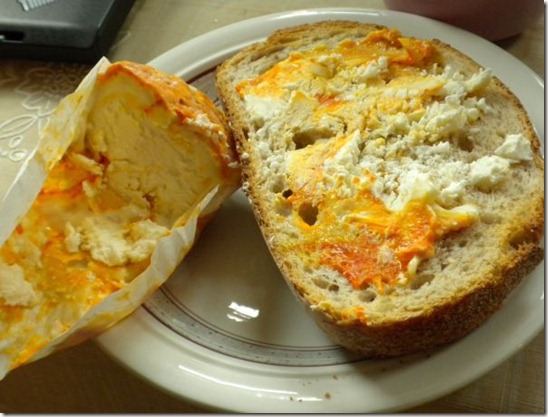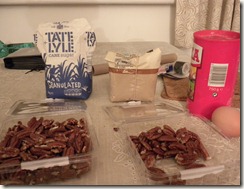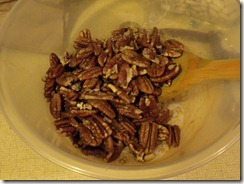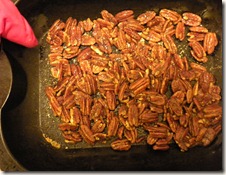One of the things I love about England is the omnipresence of of jacket potatoes, or, as Americans call them, baked potatoes. In addition to the different name, one big difference between English jacket potatoes and American baked potatoes is that jackets count as a meal in their own right. They’re not the standard accompaniment to a juicy steak; they get their own side (typically a rather limp salad). Since jackets are more of a main dish, there’s also a greater variety of possible fillings. But, as Felicity Cloake notes in the Guardian, there’s really no reason to ever go beyond beans and cheese.
Homemade jacket potatoes are just as good, and often better, than what you get in cafés. In fact, after having some subpar jackets this year, I’ve decided to never order jacket potatoes at a café or restaurant ever again. Unless it’s really cold outside.
So, without further ado, here’s my recipe for the best jacket potatoes you’ll ever have. This recipe also includes a modified version of the Cook’s Illustrated recipe for homemade baked beans – you can use canned beans, but with the homemade version so easy (if time-consuming), you should really give the homemade version a try at least once.
We made this on Boxing Day.
Homemade baked beans
- 2-3 tablespoons olive oil
- 1 medium onion, chopped fine
- ~1/2 cup mild molasses (you can substitute brown sugar here if you don’t have any molasses – you won’t need quite as much brown sugar)
- 1 1/2 tablespoons brown mustard (if you can find whole-grain mustard, even better)
- 1 pound dried small white beans (navy beans or haricot beans are what you’re looking for)
- 3 tablespoons ketchup
- 1 teaspoon cider or red wine vinegar
- Salt and pepper
1) Overnight (or at least 8 hours in advance), soak dried beans.
2) Heat olive oil in large saucepan or Dutch oven over medium heat. Add onion and cook, stirring frequently, until soft – about 8 minutes.
3) Add molasses, mustard, beans, 1 1/4 teaspoons salt, ketchup, and 9 cups water. Increase heat to medium-high and bring to a boil.
4) Lower the heat to bring concoction to simmer. Cover.
5) Cook for at least two hours, stirring occasionally. Here’s where the mystery of cooking beans comes in. The exact cooking time will depend on how long you’ve soaked the beans in advance. After two hours, just check on them every 10-15 minutes checking for doneness. You want them mash-able, but still with some structural integrity. If it seems too soup-y, feel free to uncover for the last bit of cooking.
6) Stir in vinegar. Add salt and pepper to taste.
Voila! Baked beans. When we made these, I was slightly concerned about the mustard flavor overwhelming everything else, but it settles in nicely after all that cooking time.
Jacket potatoes with beans and cheese
- Two large baking potatoes
- Kosher salt
- 2 tablespoons olive oil
- 1 leek
- Butter
- Baked beans
- Cheddar (here’s the rare case where the milder stuff might be a bit better than extra-sharp cheddar, but you know what kind of cheese you like)
1) Pre-heat oven to 425° Fahrenheit.
2) Wash potatoes, then prick them a few times with a fork (this is to prevent them from exploding in the oven). Sprinkle the kosher salt over the potatoes until evenly coated.
3) Place potatoes directly on the oven rack. After 60 minutes, check for done-ness – the skin should be crisp and the potato should give a little bit when you apply pressure (not too much, since you don’t want it to explode!). If it’s not done, give it another 5-10 minutes, then check again.
4) While the potatoes are baking, heat the oil in a frying pan over medium heat. Halve the leek length-wise, then slice the white parts thinly (you can discard the green bits). Fry the leeks for a few minutes, until lightly browned – they’ll continue to cook a bit after you turn off the heat, and you don’t want to overdo it.
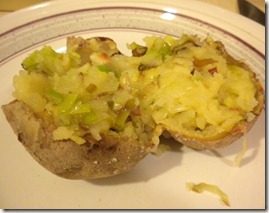 5) Once the potatoes are done, slice them in half length-wise, but don’t cut it all the way through. Spoon out the inside of the potatoes into a mixing bowl. Mix at least one tablespoon of butter (more if you’d like!) and the fried leeks with the potatoes, then mash until well-mixed. Spoon the mixture back into the potato skins. At this point, it should look like this picture on the right.
5) Once the potatoes are done, slice them in half length-wise, but don’t cut it all the way through. Spoon out the inside of the potatoes into a mixing bowl. Mix at least one tablespoon of butter (more if you’d like!) and the fried leeks with the potatoes, then mash until well-mixed. Spoon the mixture back into the potato skins. At this point, it should look like this picture on the right.
6) Spoon a good-sized amount of the baked beans on top of the potatoes, then grate as much cheese as you’d like on top of it all. If you like your potatoes as loaded up as I do, it should look something like this:
Enjoy!
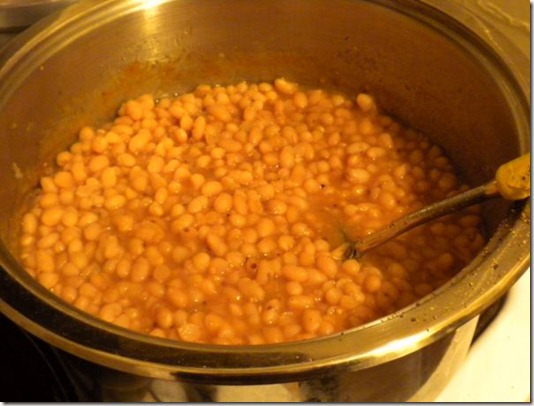
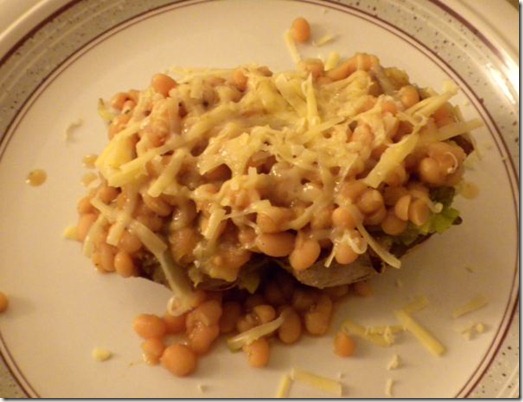




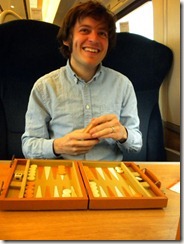
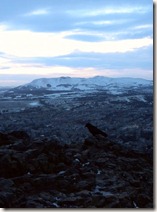
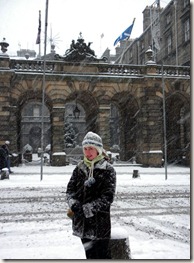
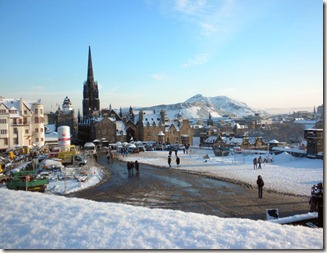
 In any case, the important part for our visit is that the Scottish Parliament, as parliaments typically do, has its own
In any case, the important part for our visit is that the Scottish Parliament, as parliaments typically do, has its own  As you might recall, the British transportation system ground to a halt on Tuesday. So while we anxiously waited to see whether we’d be able to get back to London (we did, on a train that cut over to the
As you might recall, the British transportation system ground to a halt on Tuesday. So while we anxiously waited to see whether we’d be able to get back to London (we did, on a train that cut over to the 



